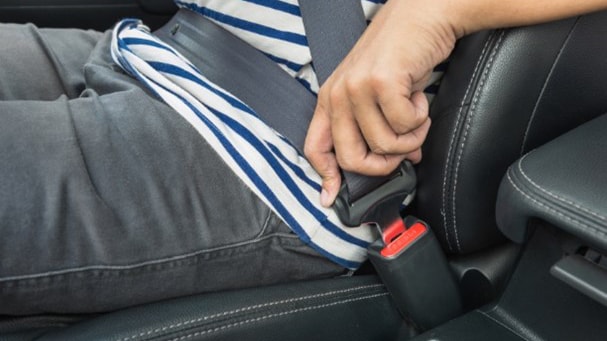Key points
- Motor vehicle crashes are a leading cause of death among those aged 1-54 in the United States.
- Seat belt use is the most effective way to save lives and reduce injuries in motor vehicle crashes.

Overview

Motor vehicle crashes are a leading cause of death among those aged 1-54 in the United States, and most people who are killed in crashes are passenger vehicle occupants (drivers and passengers). Of the 45,404 people killed in crashes in 2021,1 about 27,242 (or 60%) of these were passenger vehicle occupants.2 Passenger vehicles include cars, sport utility vehicles (SUVs), pickup trucks, and vans. For adults and older children (who are big enough for seat belts to fit properly), seat belt use is the most effective way to save lives and reduce injuries in crashes. Yet millions do not buckle up on every trip.
Seat belt use in action
Rural & Urban Differences
In the United States, living in rural areas is associated with higher crash-related death rates for drivers and passengers, a higher percentage of deaths among those not buckled up at the time of the crash, and lower seat belt use in adults.
Adult Seat Belt Use
Seat belt use has become the national norm, but rates of seat belt use vary widely from state to state. State rates of observed seat belt use ranged from 76% to 97% in 2022.3
Seat Belt Use in Front and Back Seats
Buckle Up – Every Seat, Every Trip. Seat belt use is significantly higher for people riding in the front passenger seat than for people riding in the back seats (92% and 76%, respectively, in 2022 for adults aged 25-69).4 Similarly, beliefs in the importance of seat belt use are higher for the front seat than the rear seat.
- Centers for Disease Control and Prevention. WISQARS (Web-based Injury Statistics Query and Reporting System) [online]. Atlanta, GA: US Department of Health and Human Services, CDC; 2023. Available at https://www.cdc.gov/injury/wisqars/index.html. Accessed 8 Nov 2023.
- Stewart, T. Overview of Motor Vehicle Crashes in 2021. National Highway Traffic Safety Administration, Washington, DC; 2023. Publication no. DOT-HS-813-435. Available at https://crashstats.nhtsa.dot.gov/Api/Public/ViewPublication/813435. Accessed 7 Sept 2023.
- National Highway Traffic Safety Administration. Seat Belt Use in 2022 – Use Rates in the States and Territories. U.S. Department of Transportation, Washington, DC; 2023. Publication no. DOT-HS-813-487. Available at https://crashstats.nhtsa.dot.gov/Api/Public/Publication/813487. Accessed 8 Nov 2023.
- National Highway Traffic Safety Administration. Occupant Restraint Use in 2022: Results From the NOPUS Controlled Intersection Study. U.S. Department of Transportation, Washington, DC; 2023. Publication no. DOT-HS-813-523. Available at https://crashstats.nhtsa.dot.gov/Api/Public/ViewPublication/813523. Accessed 8 Nov 2023.
